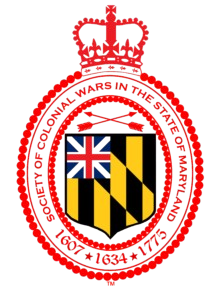Maryland Colonial History
Historical Chronology
1600 - 1699
1608, June 2 & July 24. Capt. John Smith (1580-1631) led two voyages exploring the Chesapeake Bay.
c. 1620. Earliest appearance in Maryland of European objects in archeological context.
1629. George Calvert (1578/9-1632), 1st Lord Baltimore, sailed from Newfoundland to Virginia.
1631, May. Kent Island trading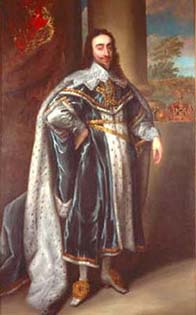 post and farming settlement established by William Claiborne, member of Virginia Council.
post and farming settlement established by William Claiborne, member of Virginia Council.
1632, June 20. Charles I (1600-1649), King of Great Britain and Ireland, granted Charter to Cecilius Calvert (1605-1675), 2nd Lord Baltimore, who named Maryland after Charles’ wife, Henrietta Maria (1609-1669).
1633. William Claiborne opened trading post on Palmers Island (now Watson’s Island) near mouth of Susquehanna River.
Charles I, King of England, Studio of Anthony Van Dyke, c.1640 (MSA SC 1545-1099). Courtesy of Commission on Artistic Property, Maryland State Archives.
1633, Nov. 22. English settlers, led by Leonard Calvert, set sail on Ark and Dove from Cowes, England, for Maryland. Calvert had been appointed Maryland’s first Governor by his brother, Cecil Calvert, 2nd Lord Baltimore, following grant of Maryland Charter by Charles I, King of Great Britain and Ireland.
- A Briefe Relation of the Voyage Unto Maryland, by Father Andrew White
1634, March 25. Landing of settlers at St. Clement’s Island (Maryland Day). Calvert party celebrated Feast of Annunciation (March 25); later purchased land from Yaocomaco tribe, and built “Fort at St. Mary’s City.”
1634-1644. Leonard Calvert, governor.
1634/5, Feb. 26. First General Assembly (law-making assembly of freemen) met at St. Mary’s City.
1634-1694. St. Mary’s City, established March 27, 1634, served as capital of Maryland.
1635. Proprietary vessels clash with those of William Claiborne.
1635, Sept. 8. A Relation of Maryland published by Jerome Hawley and John Lewger (London).
1636. Leonard Calvert House (later, Country’s House), East St. Mary’s, served as state house and governor’s residence.
1637. St. Mary’s County first cited in provincial records.
1638. Assembly claimed protections of English law; Assembly and courts met at John Lewger‘s St. John’s.
1639. First elections in province for delegates to Assembly ordered by Governor Leonard Calvert on Kent Island, and in hundreds (political subdivisions or districts) of Mattapanient, St. Michael’s St. Mary’s, and St. George’s.
1639, May 28. Company of soldiers pressed into service for military expedition on “Indians of the Eastern Shore,” per gubernatorial order.
1639/40, Jan. 3. Governor Calvert declared war on Piscataway nation of “Maquantequats.”
1639/40, Jan. 24. Cecil Calvert, 2nd Baron Baltimore, declared peace with and offered protection to the Patuxent, by way of his brother and personal representative in Province, Governor Leonard Calvert.
1641, Aug. 13. Governor Leonard Calvert surveyed and patented 100-acre plot of land, thereafter known as Governor’s Field, for tobacco plantation at St. Mary’s City.
1642. Governor’s residence in St. Mary’s City, Calvert House, completed by this time; Assembly began to meet there.
1642. Kent County first cited in records of commissioner appointments.
1642, Sept. 13. Susquehannocks, Wicomisses, and Nanticokes declared “enemies” of Province by gubernatorial proclamation.
1642/3, Jan. 26. Governor Calvert established peace with and rescinded his declaration of war on Nanticokes.
1643-1644, Oct. Giles Brent, acting provincial governor.
1643/4. Due to Indian attacks against English settlers at Patuxent in 1643, Acting Governor Giles Brent authorized settlers to warn off and then shoot Indians who approached but would not leave.
1644, June 8. Acting Governor Giles Brent declared peace with and offered protection to the Patuxents.
1645, Feb. 14-1646, Dec. Ingle’s Rebellion: Richard Ingle led rebellion against proprietary government.
1646, Dec.-1647, June 9. Leonard Calvert, governor.
1647. At Piscataway Creek, Susquehannocks moved to Susquehannock Fort.
1647-1649. Thomas Greene, governor.
1647, July 4. Governor Thomas Greene authorized a military expedition against Nanticokes and Wicomisses.
1647/8, Jan. 21. Margaret Brent (1601-1671) denied right to vote in General Assembly.
1649-1652. William Stone, governor.
1649. Governor William Stone invited Virginia Puritans to settle in Maryland.
1649. Town of Providence (later Annapolis) founded.
1649, April 21. Religious toleration law (An Act concerning Religion) enacted.
1650, April. Providence erected as Annarundell County (now Anne Arundel County) (Chapter 7, Acts of 1650); named for Lady Anne Arundell (1615-1649), wife of Cecelius Calvert, 2nd Lord Baltimore.
1650, April 6. General Assembly divided into an upper and lower house.
1652, March 29. Parliamentary commissioners displaced proprietary regime.
1652, July 5. Susquehannocks sign treaty at Severn River, ceding Eastern Shore and Western Shore lands (except Kent Island & Palmer’s Island) to English.
1652, Nov. 25. Governor William Stone ordered “every Seventh man throughout the province” to be pressed into service for military expedition against Indians of Eastern Shore.
1654, July 3. Patuxent County (later Calvert County) formed by order in Council of Maryland. County originally encompassed most of Prince George’s County, and parts of Anne Arundel and St. Mary’s counties.
1654, Oct. 20 General Assembly established Court in St. Mary’s County.
1654, Dec. 5. Provincial Court authorized St. Mary’s County Courthouse to be built on property of John Hammond near Leonardtown.
1655, March 25. Puritans from Virginia defeated Gov. William Stone‘s forces at Battle of the Severn.
1656. John Hammond’s Leah and Rachel, Or, the Two Fruitfull Sisters Virginia and Maryland published (London).
1657. First European inhabitants recorded on Smith Island.
1657, Nov. 30. Oliver Cromwell (1599-1658) restored Maryland colony back to Calverts; Lord Baltimore‘s claim to Maryland reaffirmed. Cecil Calvert, 2nd Lord Baltimore reestablished proprietary authority.
1657-1660. Josias Fendall, governor.
1658. Charles County created by order in Council.
1659. “Seaside War” against Assateagues waged by Col. Edmund Scarborough of Virginia.
1659, Jan. 12. Writ issued to sheriffs of Anne Arundel, Baltimore, Calvert, Charles, Kent and St. Mary’s counties ordering election by freemen of four delegates per county to Lower House.
1660. Bohemia Manor established by Augustine Herrman (c. 1621-1686).
1660-1661. Philip Calvert, governor.
1660, Dec. 20. Uttapoingassinem, formally recognized as Tayac (emperor) of Piscataways.
1661, May 16. At Spesutia Island, peace treaty with Susquehannocks signed by Governor Philip Calvert.
1661-1675. Charles Calvert, governor.
1661. Baltimore County seat located at Old Baltimore on Bush River.
1661/62, Feb. 18. Talbot County known to have been established by this date, when a writ was issued to county sheriff.
1662. Treaty with Assateagues and Nanticokes.
1663. Augustine Herrman, first naturalized citizen of Maryland.
1663, Nov. 17. Governor Charles Calvert formally acknowledged “Sundry Complaints” from Queen of Portobacks, relating to English encroachment on their “ancient plantacons“; English inhabitants of Province are barred from taking up any land within three miles of Indian settlements.
1664. Slavery sanctioned by law; slaves to serve for life.
1664, June 27. Governor Charles Calvert declared war on Senecas.
1665, Oct. 10. Governor Calvert ordered a reservation to be laid out for Mattawomens, upon their “oulde Habitacons“; any Englishman taking up land within three miles of reservation was ordered to be imprisoned for twelve months.
1666. Somerset County established by order in Council.
1666. Assembly agreed to 1-year cessation on tobacco growing, but Cecil Calvert, 2nd Lord Baltimore, vetoed bill.
1666. A Character of the Province of Maryland, by George Alsop (c. 1636-c. 1673), published (London)
1667. St. Mary’s City incorporated.
1667, Aug. 6. Wicomisses, and “all other Indians that shall receive, harbor, or entertain them,” declared enemies of the Province, per gubernatorial proclamation.
1668, May 1. Treaty with Nanticokes.
1668/69. Feb. 16. Dorchester County known to have been established by this date, when a writ was issued to county sheriff.
1669. Choptank Indian Reservation laid out near Cambridge.
1670. Voting restricted by Governor to planters with 50-acre freehold or property worth 40 pounds; officeholding restricted to owners of 1,000 acres.
1670. Authoritative map of Maryland (engraved, London, 1673) completed by Augustine Herrman.
1670, July 20. Piscataways petitioned the Calverts for a continuation of peace.
1672, Oct. George Fox (1624-1691), founder of Religious Society of Friends (Quakers), preached in Anne Arundel County. Friends form Baltimore Yearly Meeting.
1674. Cecil County erected from Baltimore and Kent counties by proclamation of Governor.
1675-1677. Maryland and Virginia war against remaining Susquehannocks.
1676. Brick State House completed at St. Mary’s City, replacing Country’s House.
1676. In Lower House, Proprietor limited delegates to two per county, though four for each county were elected.
1676-1679. Thomas Notley, governor.
1678, June 16. Treaty between Maryland and Assateague Emperor Amonugus ordered Assateagues onto five reservations along Pocomoke River.
1679-1684. Charles Calvert, 3rd Lord Baltimore, governor.
1679. Governor granted county courts jurisdiction over civil suits.
1680. Piscataways abandoned Piscataway Fort on Piscataway Creek, moving to Zekiah Swamp to escape raids of Iroquois and Susquehannocks; Zekiah Fort established east of present-day Waldorf near Piney Branch by Gov. Charles Calvert for protection of Piscataway.
1681. Josias Fendall (c. 1628-1687) found guilty of conspiracy by Provincial Court, which fined and banished him.
1681. Sheriffs of Counties instructed to elect two delegates per county to Lower House, despite 1678 law requiring four delegates.
1682. Quakers began building Third Haven Meeting House (completed 1684), Talbot County.
1682, Oct. 26. Charles Calvert, 3rd Lord Baltimore, announced that only two delegates would be sent from each county to the Lower House in order to reduce costs.
1682, Dec. 13. William Penn met at Harwood with Charles Calvert, 3rd Lord Baltimore.
1683. Assembly passed Act for Advancement of Trade (town act).
1683. Labadist community settled at Bohemia Manor.
1683, May 15. Proprietor replaced headright system of land grants with “caution money” or outright purchase.
1684. Presbyterians under Francis Makemie (1658-1708) built church at Snow Hill, first in colonies.
1684-1689. Council of deputy governors ruled Maryland in the name of child Benedict Leonard Calvert.
1685, Aug. 31. Printing press of William Nuthead (1654-1695) used at St. Mary’s City by this date.
1686. Indian reservation laid out at Askiminokonson, largest Indian town in Maryland, near Snow Hill, Worcester County.
1686, Nov. 3. Indians “belonging to the King of Pocomoke,” including representatives of Annemessex, Nassawaddox, Quandanquan, & Aquintica, complained to Council of Maryland about land laid out for them at Askiminokonson, calling it “barren” and “good for nothing.”
1689, July 27. Maryland Revolution of 1689. Protestant Associators under John Coode overthrew proprietary officers.
1690, May-1692, April. Interim government of Protestant Associators.
1692. Church of England made the established church. Royal assent to establishment act given in 1702.
1692, March 12-1715. Crown rule; William III and Mary II declared Maryland a royal colony, rather than a proprietary province, and appointed Sir Lionel Copley as 1st Royal Governor (he arrived in St. Mary’s County, April 6, 1692).
1692, June 2. Assembly passed law requiring four delegates from each county to be elected to Lower House.
1692, Oct. 13. Emperor of Piscataway entered into “League of Amity“, previously joined by King of Mattawomen, King of Chaptico, and Emperor of Nanticoke with Governor Copley, on behalf of William and Mary of England, along with their subjects, residents of Maryland and Virginia.
1692/3. Council of Maryland ordered construction of three forts in Anne Arundel, Baltimore and Charles counties each with ten soldiers; and an accompanying cabin for every fort each manned by four Indians chosen by Emperor of Nanticoke, Emperor of Piscataway, and King of Chaptico.
1693, Sept. Sir Thomas Lawrence, governor.
1693-1693/94. Sir Edmund Andros, governor.
1693/94. Col. Nicholas Greenberry, governor.
![[photo, State House, Annapolis, Maryland]](https://msa.maryland.gov/msa/mdmanual/25ind/images/statehouse/i003029b.jpg)
1694-1699. Francis Nicholson, governor.
1694/5, Feb. 28 – March 1. Capital moved from St. Mary’s City to Anne Arundel Town. Gov. Francis Nicholson (1655-1727/8) laid out plan for capital city.
State House, Annapolis, Maryland, May 1999. Photo by Diane P. Frese.
1695. Prince George’s County erected from parts of Charles and Calvert counties (Chapter 13, Acts of 1695, May session).
1695. Lower House renamed House of Delegates.
1695, May. Anne Arundel Town renamed Annapolis.
1696. Construction began on new State House and probably on St. Anne’s Church, Annapolis.
1696. King William’s School (later St. John’s College) founded at Annapolis by Governor Nicholson and others.
1698. Construction completed on new State House, Annapolis.
1698. Monopoly of slave trade by Royal African Company abolished by Parliament; slave imports markedly increased.
1698. Nanticoke Indian Reservation laid out near Vienna, Dorchester County.
1698-1702. Nathaniel Blakiston (or his appointee), acting governor.
1700 - 1780
1704-1709. John Seymour, governor.
1704. Construction completed on St. Anne’s Church, Annapolis.
1704, Oct. 3. Treaty with Nanticoke.
1704, Oct. 18. First Annapolis State House burned.
1706. Queen Anne’s County formed from Kent and Talbot counties.
1706. Justus Engelhardt Kühn (d. 1717), portrait painter, arrived in Maryland.
1708, Nov. 22. Annapolis incorporated as a city (Chapter 7, Acts of 1708).
1708. The Sot-Weed Factor: Or, A Voyage to Maryland, by Ebenezer Cooke (c. 1665-c. 1732), published (London).
1709. Construction completed on second Annapolis State House.
1709-1714. Edward Lloyd (president of council), acting governor.
1710. Talbot Court House (later East Town or Easton).
1714-1720. John Hart, governor.
1715, Feb. Crown restored proprietary rights to Benedict Leonard Calvert, 4th Lord Baltimore.
1715, April. Charles Calvert succeeded as 5th Lord Baltimore.
1718. Catholics disenfranchised by Assembly.
1719. Principio Iron Works, first blast furnace in Maryland, founded near Perryville, financed by English capital.
1720-1727. Charles Calvert, governor.
1722, Oct. 22. Treaty with Assateagues and Pocomoke.
1723. School and board of visitors in each county mandated by Assembly.
![[photo, Robert Long House, 812 South Ann St., Fell's Point, Baltimore, Maryland]](https://msa.maryland.gov/msa/mdmanual/36loc/bcity/images/i002537a.jpg) 1727, Jan 10. Land near Antietam Creek deeded to Israel Friend by Chief of the Five Nations (recorded Nov. 1730).
1727, Jan 10. Land near Antietam Creek deeded to Israel Friend by Chief of the Five Nations (recorded Nov. 1730).
1727, Sept. Maryland Gazette, first newspaper in the Chesapeake, published by William Parks at Annapolis (until 1734).
1727-1731. Benedict Leonard Calvert, governor.
1729, Aug. 8. Baltimore Town established by charter; named after Cecilius Calvert, 2nd Lord Baltimore.
Robert Long House, 812 South Ann St., Fell’s Point, Baltimore, Maryland, 1999. Oldest existing residence in Baltimore dates from 1765. Photo by Diane P. Frese.
1730. Sotweed Redivivus: Or the Planters Looking-Glass, by Ebenezer Cooke (c.1665-c. 1732), published (Annapolis).
1731. Baltimore Company began ironmaking on Patapsco River.
1731-1732. Samuel Ogle, governor.
1732. Salisbury Town laid out by commissioners.
1732. Establishment of boundary line with three lower counties of Pennsylvania, which later became Delaware.
1732-1733. Charles Calvert, governor.
1733-1742. Samuel Ogle, governor.
1741. Oldtown on upper Potomac founded by Thomas Cresap.
1742. Treaty with Assateagues.
1742. Worcester County erected from Somerset County.
1742, July 10. First Baptist church in Maryland established by Henry Sater at Chestnut Ridge, Baltimore County.
1742-1747. Thomas Bladen, governor.
1743. First Lutheran church in Maryland built under David Candler’s leadership, Monocacy River.
1743. Maryland Jockey Club founded in Annapolis.
1744. Many Nanticoke left Maryland to join Iroquois, traveling north to Pennsylvania, New York, and Ontario, Canada.
1744, June 30. Native-American chiefs of the Six Nations relinquished by treaty all claims to land in colony. Assembly purchased last Indian land claims in Maryland.
1745. Maryland Jockey Club organized first races.
1745. Daniel Dulany the Elder (1685-1753) laid out Frederick Town and invited German settlement.
1745, Sept. 28. Jones’s Town and Baltimore Town incorporated by General Assembly into one entity called Baltimore Town.
1745, Jan. 17. Jonas Green (c. 1712-1767) revived Maryland Gazette.
1745, May 14. Tuesday Club formed in Annapolis.
![[photo, Dried tobacco, Mount Harmon Plantation, 600 Mt. Harmon Road, Earlville (Cecil County), Maryland]](https://msa.maryland.gov/msa/mdmanual/01glance/museums/ce//images/1198-1-07876b.jpg) 1747. Tobacco inspection law enabled Maryland to control quality of exports; established multiple inspection points to ensure export of only quality leaf, and set clerical and proprietary officers’ fees.
1747. Tobacco inspection law enabled Maryland to control quality of exports; established multiple inspection points to ensure export of only quality leaf, and set clerical and proprietary officers’ fees.
1747, May 7-8. Reformed Lutheran congregation organized by Rev. Michael Schlatter in Frederick.
1747-1752. Samuel Ogle, governor.
Dried tobacco, Mount Harmon Plantation, 600 Mt. Harmon Road, Earlville (Cecil County), Maryland, October 2016. Photo by Sarah A. Hanks.
1748. Frederick County erected from Baltimore and Prince George’s counties.
1750. Ohio Company established trading post at Will’s Creek on Potomac River.
1751. Frederick Calvert succeeded as 6th and last Lord Baltimore.
1752. Dr. John Stevenson (c. 1718-1785) shipped cargo of 1,000 bushels of grain, 15 barrels of flour, and 16 barrels of bread to Ireland, first in an export trade that spurred development of Baltimore.
1752. John Moale (c. 1731-1798) sketched Baltimore Town.
1752-1753. Benjamin Tasker (president of council), acting governor.
1753-1769. Horatio Sharpe, governor.
1754. Fort Cumberland constructed by militiamen.
1755. French-speaking Catholics arrived in Baltimore from Nova Scotia.
1755, April 23. British Maj. Gen. Edward Braddock, Lt. Col. George Washington, and Benjamin Franklin met at Frederick to plan British assault on Fort Duquesne (present-day Pittsburgh, Pennsylvania).
1755, June. British Maj. Gen. Edward Braddock (1695-1755) left Fort Cumberland and led campaign through Maryland to the west.
1755, July 9. French and Indian forces mortally wounded British Maj. Gen. Edward Braddock and defeated his army at Battle of Monongahela near Fort Duquesne. Afterwards, Indian attacks on western settlers increased.
1756. Assembly supplied funds for Fort Frederick, near North Mountain.
1762. Elizabeth Town (later Hagerstown) laid out by Jonathan Hager.
![[photo, Mason-Dixon Line sign at Maryland-Pennsylvania border, U.S. Route 15 North near Emmitsburg, Maryland]](https://msa.maryland.gov/msa/mdmanual/01glance/chron/images1700/1198-1-07107b.jpg) 1763, Sept. 22. First volunteer fire company, later Mechanical Company, formed in Baltimore.
1763, Sept. 22. First volunteer fire company, later Mechanical Company, formed in Baltimore.
1763-1767. Charles Mason and Jeremiah Dixon surveyed boundary line with Pennsylvania.
1764. First Methodist house of worship in colonies, the John Evans House, built under leadership of Robert Strawbridge in Frederick (later Carroll) County
Mason-Dixon Line sign at Maryland-Pennsylvania border, U.S. Route 15 North near Emmitsburg, Maryland, May 2015. Photo by Sarah A. Hanks.
1765. Daniel Dulany, Jr. (1722-1797), denounced Stamp Act in Considerations on the Propriety of Imposing Taxes in the British Colonies for the Purpose of Raising a Revenue, by Act of Parliament (Annapolis).
1765, Nov. 23. County Court judges renounced Stamp Act on what became known as Repudiation Day.
1766. Sons of Liberty organized in Baltimore County.
1767. Annapolis merchants sent Charles Willson Peale (1741-1827) to London to study painting with Benjamin West.
1768. Baltimore County seat moved from Joppa to Baltimore Town.
1768, June 18. Nanticoke relinquished their land claims in Maryland and received compensation.
1769. Maryland merchants adopted policy of nonimportation of British goods.
1769. First smallpox hospital in colonies established by Henry Stevenson, Baltimore.
1769-1776. Sir Robert Eden, governor.
1770-1772. Second Annapolis State House demolished (Chapter 14, Acts of 1769).
1771, Sept. 9. First brick theater in America opened on West Street in Annapolis with production of “The Roman Father.”
1772. Brothers John, Andrew and Joseph Ellicott erected largest flour mill in Maryland on Patapsco River.
![[photo, State House, Annapolis, Maryland]](https://msa.maryland.gov/msa/mdmanual/25ind/images/statehouse/1198-1-1107.jpg)
1772, March 28. Cornerstone laid for third Annapolis State House (Chapter 32, Acts of 1773).
1773, June 28. Assembly enlarged Baltimore Town.
1773. Caroline County erected from Dorchester and Queen Anne’s counties.
State House, Annapolis, Maryland, April 2005. Photo by Diane F. Evartt.
1773. Harford County formed from Baltimore County.
1773, Jan. 7 – July 1. Maryland Gazette published debate between Charles Carroll and Daniel Dulany, Jr. (under names “First Citizen” and “Antilon,” respectively) on Governor’s right to set fees without legislative consent.
1773, Aug. 20. William Goddard (1740-1817) began printing Maryland Journal and Baltimore Advertiser.
1774. Catoctin Iron Furnace, Frederick County, built to produce pig iron.
1774, April 19. Last colonial General Assembly prorogued by Sir Robert Eden, Governor of Maryland.
1774, June 11. Hungerford Resolves call on colonists to stop trade with Great Britain and the West Indies.
1774, June 22. First Provincial Convention (an extralegal body) met at Annapolis, and sent delegates to First Continental Congress.
1774, Aug. Baltimoreans shipped cargo of corn, rye, and bread to people of Boston.
1774, Oct. 19. Mob burned Peggy Stewart in Annapolis harbor.
1774, Dec. Mordecai Gist (1743-1792) formed Baltimore Independent Cadets.
1775, March 22. “Bush Declaration” signed, Bush River, Harford County, patriots call for independence.
1775, July. Mary Katharine Goddard was named the first Postmaster of Baltimore, the first female postmaster in the colonies.
1775, July 16. Congress adopted William Goddard‘s plan for Constitutional Post, the foundation of U.S. postal system.
1775, July 18. Rifle companies under Michael Cresap and Thomas Price departed Frederick Town to join Washington’s army at Boston, later to become part of Maryland and Virginia Rifle Regiment.
1775, July 26. Association of Freemen formed by Maryland Convention.
1775, Aug. 29. Council of Safety organized.
1775, Dec. Association of Freemen began recruiting troops.
1776. Captain James Nicholson commanded Maryland sloop Defence.
1776, Jan. 14. Colonel William Smallwood (1732-1792) organized Maryland Battalion (later called 1st Maryland Regiment).
1776, March. Whig Club formed in Baltimore.
1776, March. Fort Whetstone, Baltimore, erected at later site for Fort McHenry.
1776, June 26. Departure of Sir Robert Eden, Maryland’s last colonial governor.
![[portrait, Samuel Chase, by John Beale Bordley, 1836]](https://msa.maryland.gov/msa/mdmanual/01glance/images/chase.jpg) 1776, July 4. Declaration of Independence adopted in Philadelphia. Engrossed copy signed by Marylanders William Paca (1740-1799), Charles Carroll of Carrollton (1737-1832), Thomas Stone (1743-1787), and Samuel Chase (1741-1811).
1776, July 4. Declaration of Independence adopted in Philadelphia. Engrossed copy signed by Marylanders William Paca (1740-1799), Charles Carroll of Carrollton (1737-1832), Thomas Stone (1743-1787), and Samuel Chase (1741-1811).
This chronology provided courtesy of the Maryland Manual, msa.maryland.gov.
-
Aided by Robert J. Brugger, Maryland: A Middle Temperament, 1634-1980 (Baltimore and London: The Johns Hopkins University Press, 1988). The Maryland State Archives presents its website for reference purposes under the doctrine of fair use. The site may contain copyrighted material from other sources. Rights assessment, and full originating source citation, is the responsibility of the user.
Did you know that 16 of Maryland’s 23 counties were established in the colonial era? Thirteen were named after colonial figures. Kent was named after the English county, Baltimore County was named after the Calverts’ Irish barony, and Saint Mary’s was named after the Virgin Mary. The other seven counties were established during or after the American Revolution.
Seals of Maryland Counties
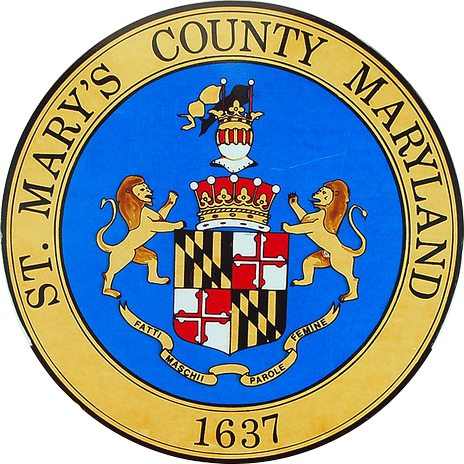
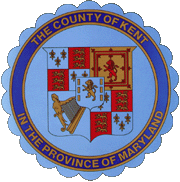
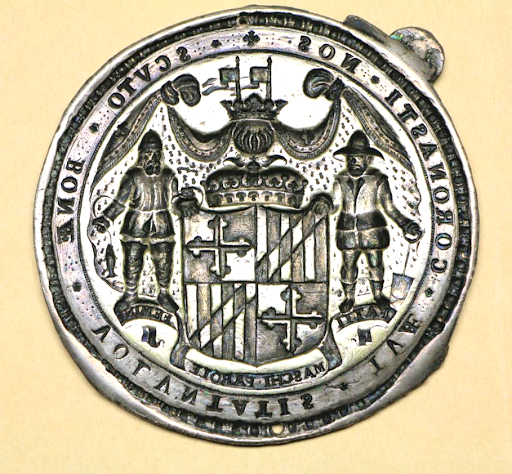
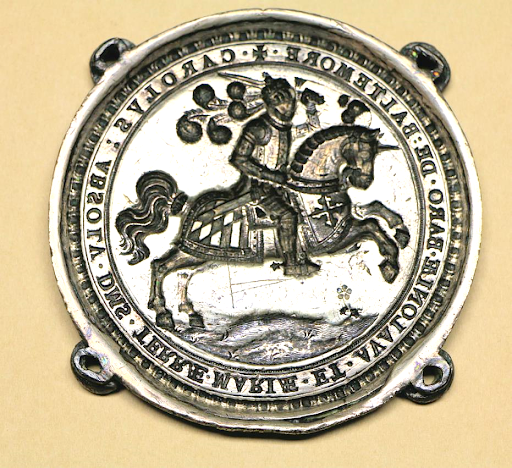
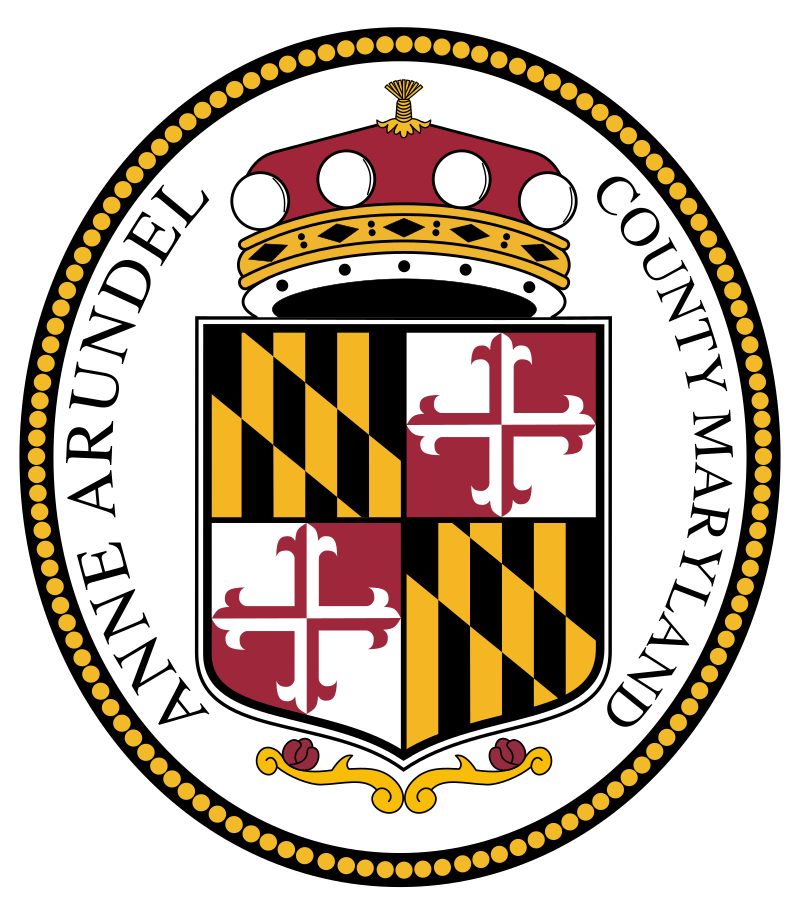
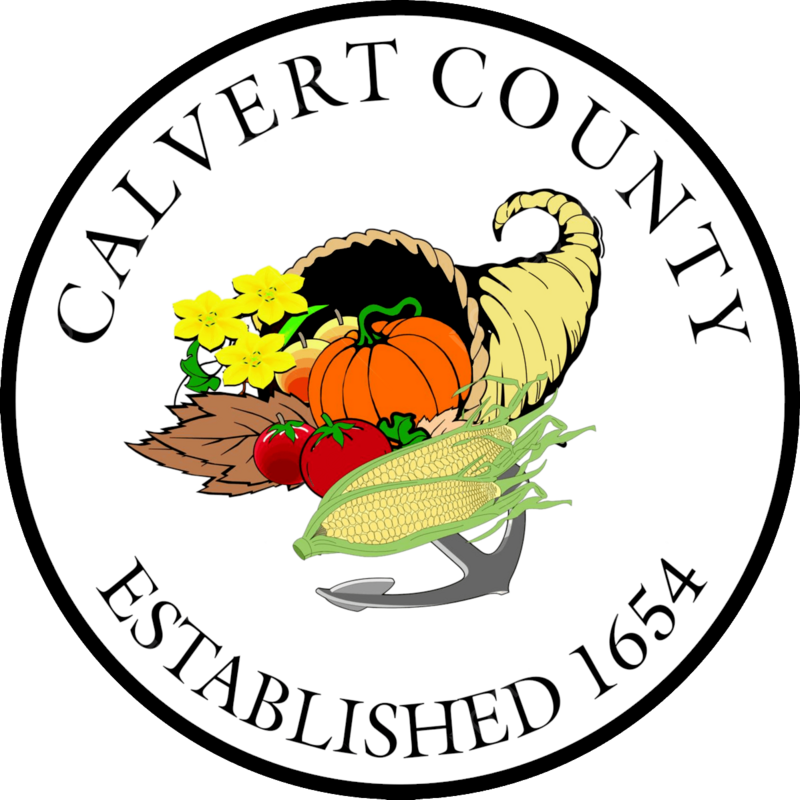
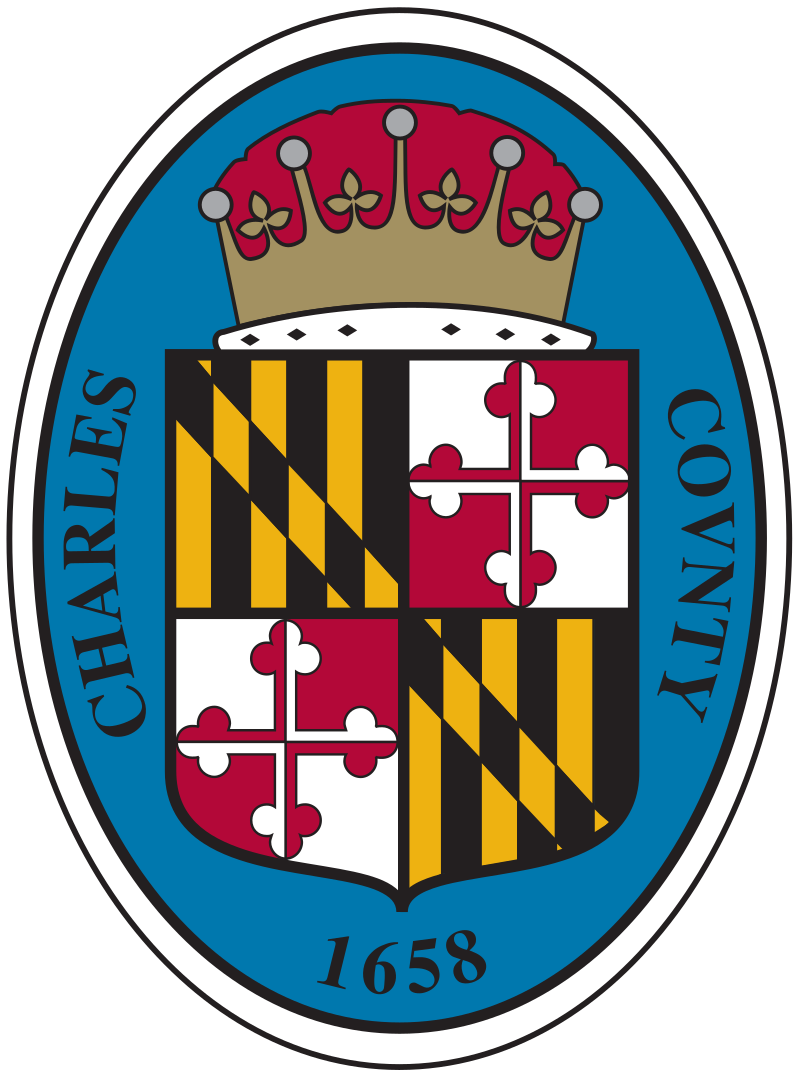
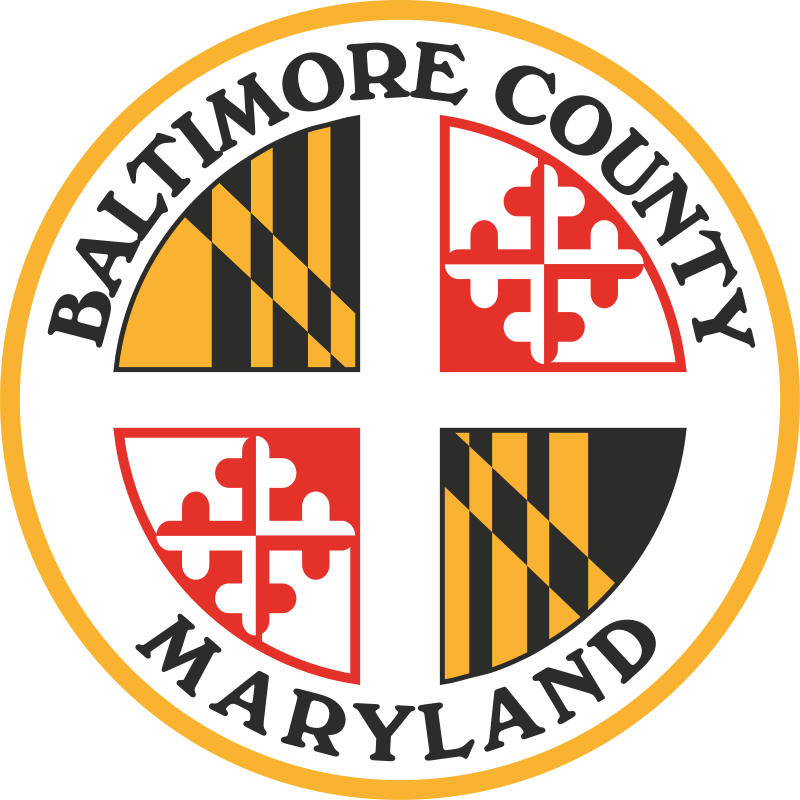
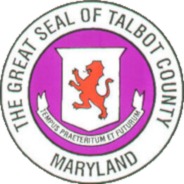
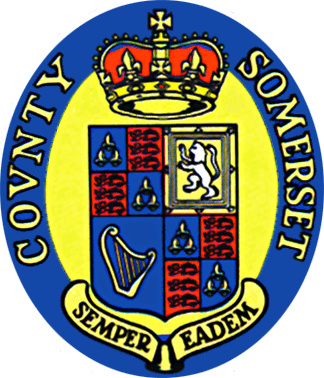
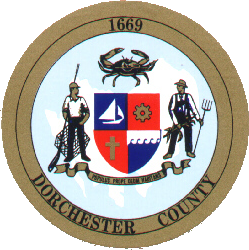
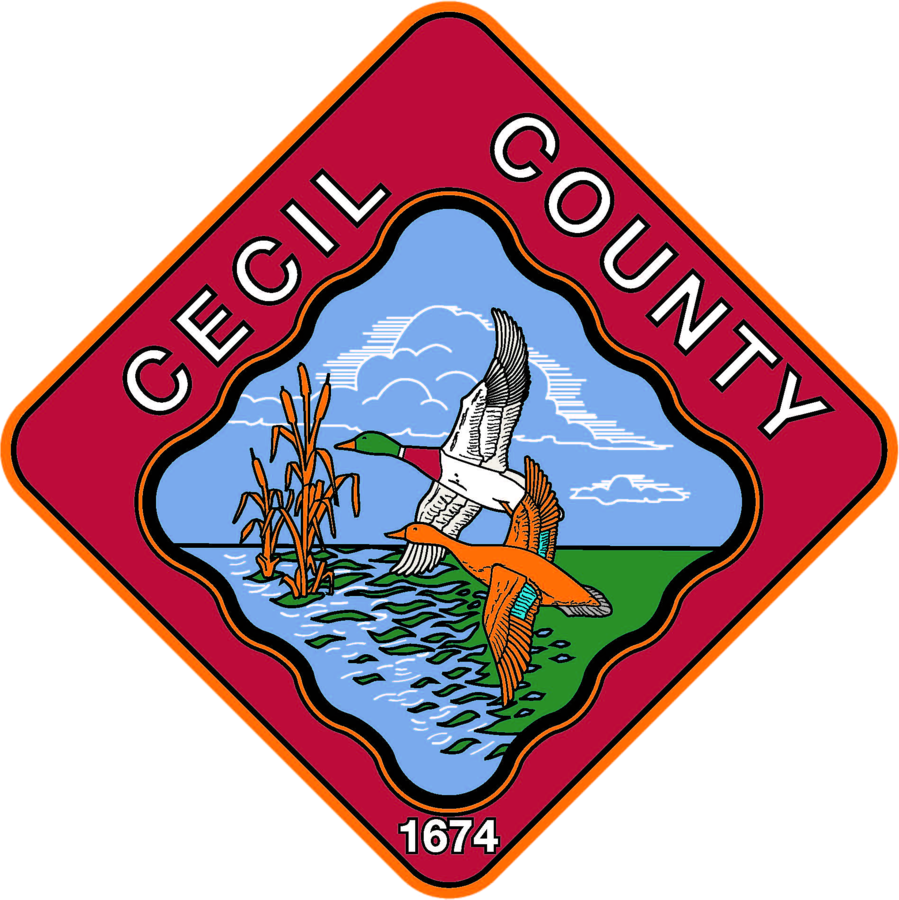
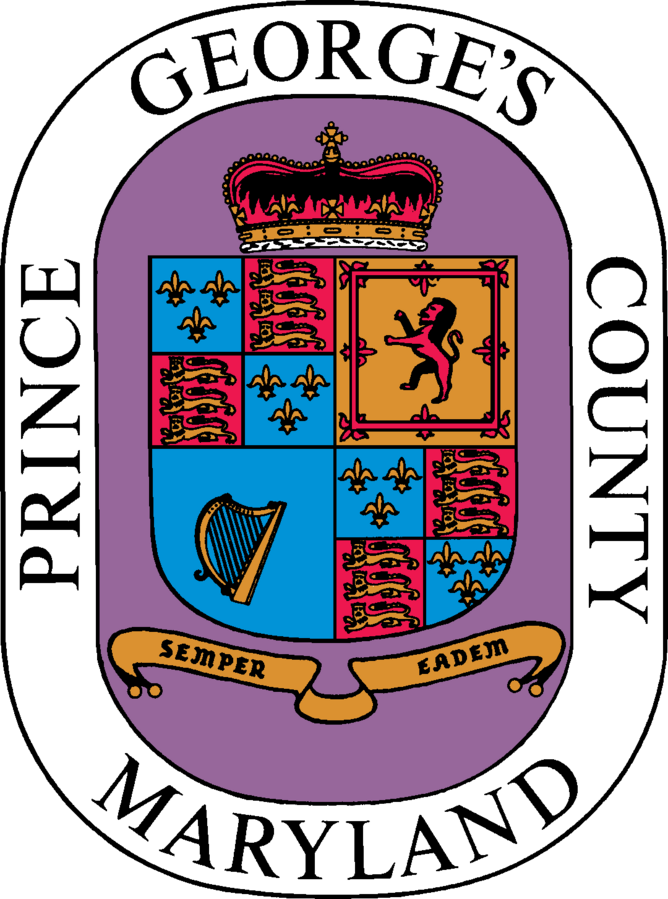
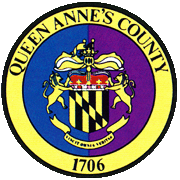
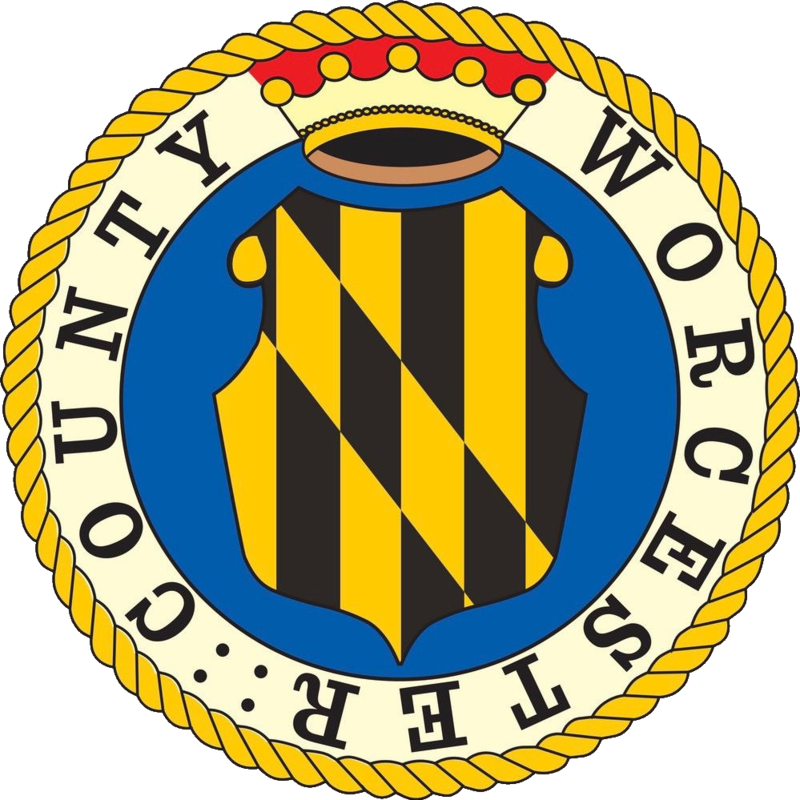
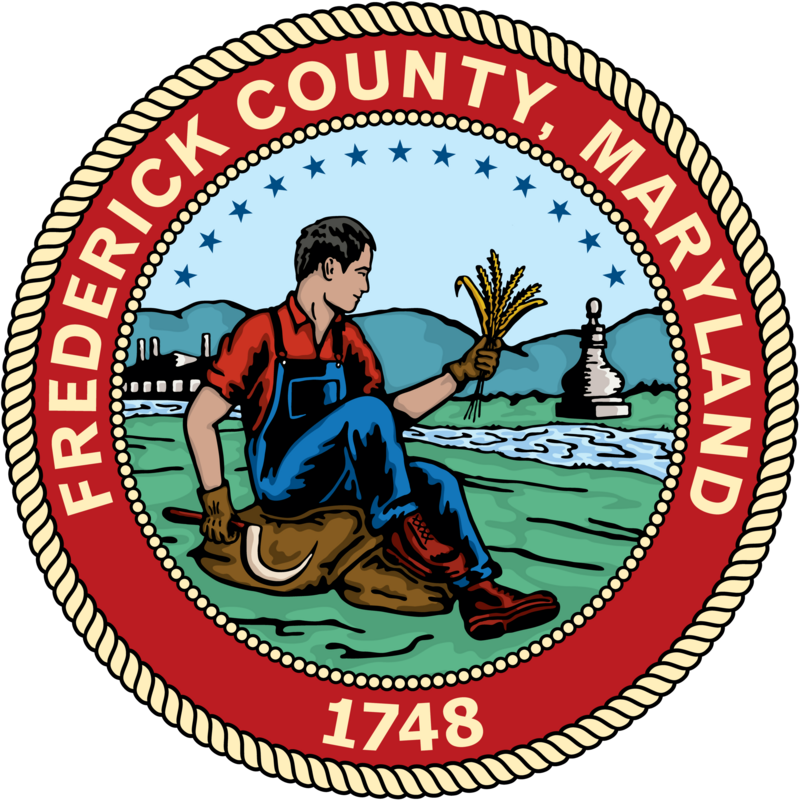
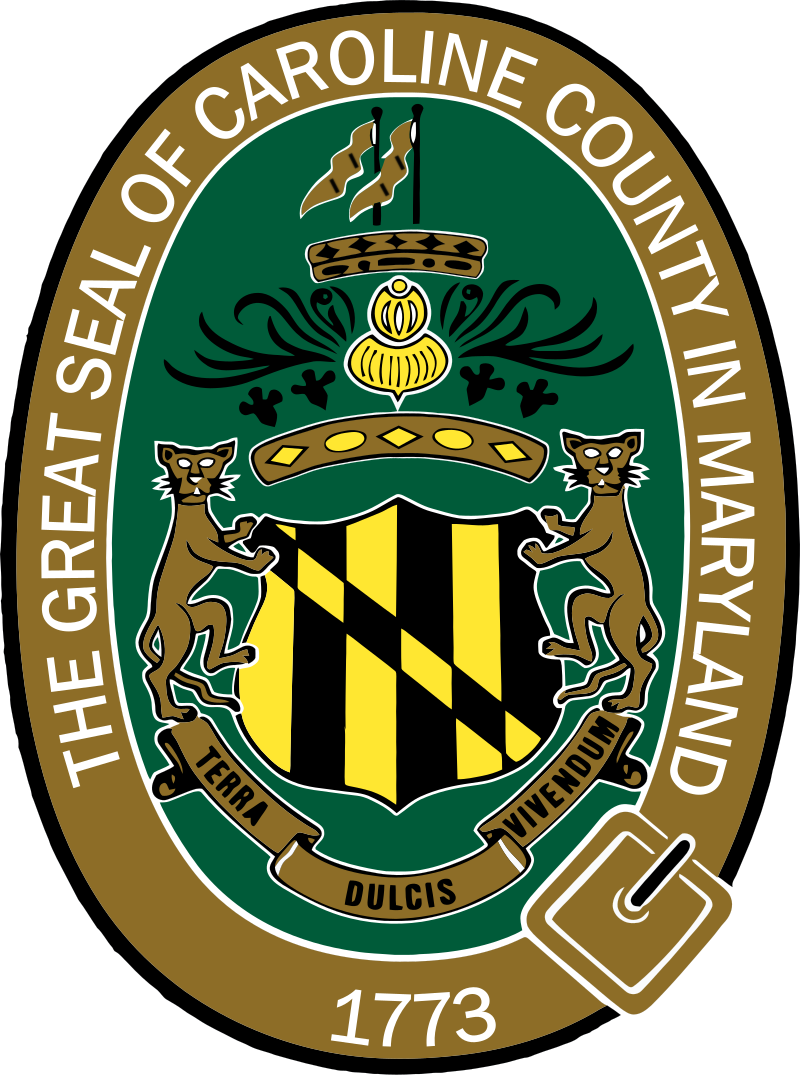
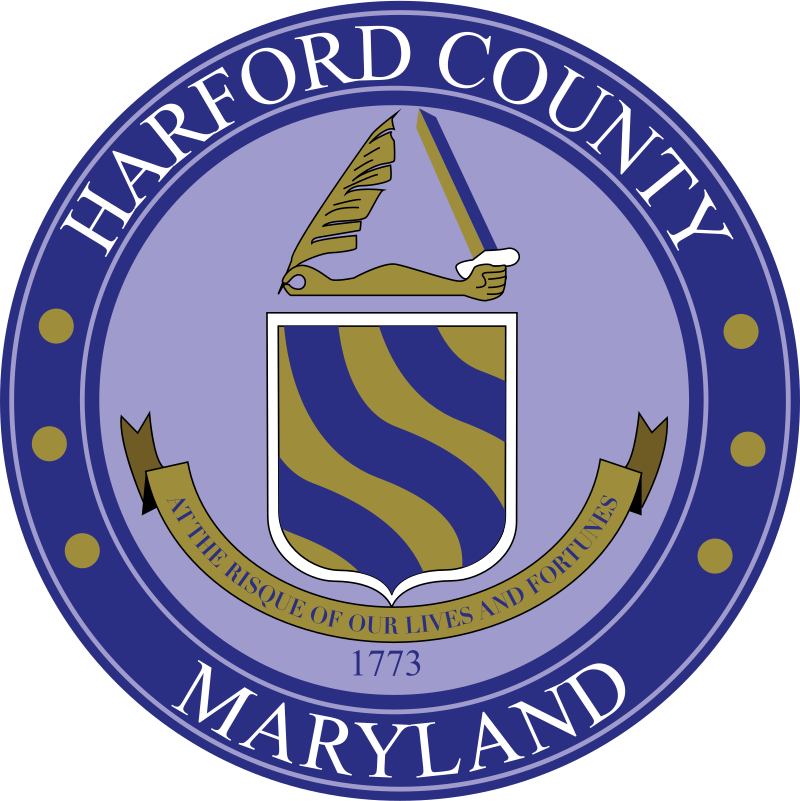
Courtesy of The National Society of the Colonial Dames of America in the State of Maryland
Article Categories
Read below to learn more about topics regarding Maryland’s colonial era history 1634-1776.
